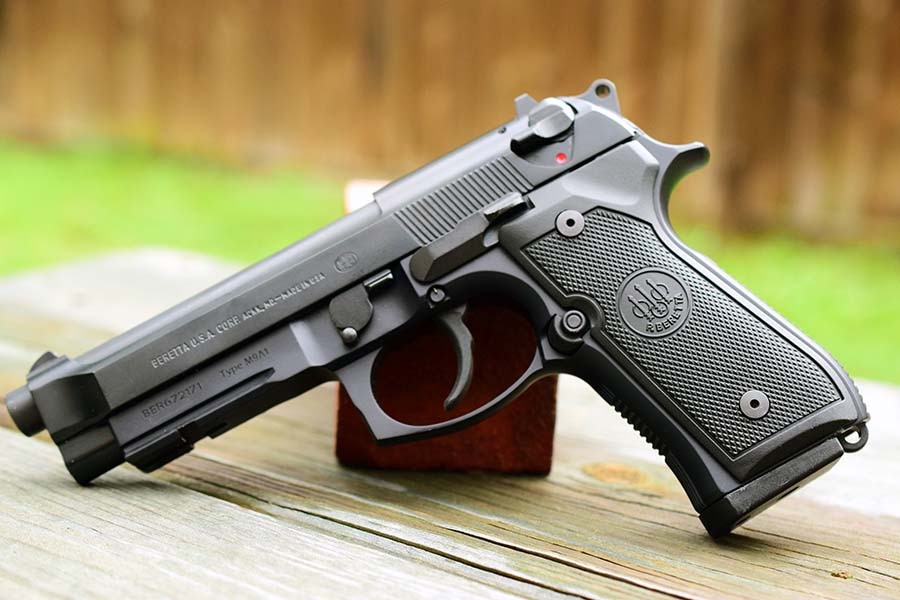It’s 1979, the year disco and M1911’s military service formally died. People to this day don’t still contend that disco should have stuck around, no. They argue why the boneheaded military got rid of the greatest handgun on the planet.
The reasons no longer matter, but imagine if you were at that meeting table. You have to replace the aging M1911 with a NATO-compliant 9mm handgun that has to outperform the classic pistol in nearly every regard. What do you choose?
Gaston is two years from producing his plastic-fantastic Glock 17, and SIG’s cash cow, the P226 was a full five years away. Do you try and beg SIG to make a double-stack P210, knowing that the precision Swiss pistol’s price-tag will keep it from ever entering service or search through the existing wonder nine pistols in an effort to standardize ammo amongst your allies?
If your forces are already familiar with the late, great John Moses Browning’s designs and they work. Why not go with the logical conclusion, the Browning Hi-Power? With magazines that hold 13 rounds, it has nearly double the 1911’s capacity, which should appease the bean-counters in Washington.
The handgun features a single-action trigger system that still allows the user the carry it cocked and locked, so soldiers already familiar with condition one carry won’t have to re-learn. Both the Canadian and British armies employed the pistol with great success in the Second World War, so it was already battle-tested. To top it off, British, Canadian and U.S. forces would be able to share not only pistol ammunition but also magazines and spare parts.
Imagine where the Hi-Power’s design would be today if given the same attention as the M1911. We would have railed, 30-round variants with adjustable night sights, carbine conversions and suppressed Hi-Powers in the hands of special forces. We might even get our hands on a polymer-framed Hi-Power like the South African’s have. Hell, the Bren-Ten might have even taken off.
On second thought, maybe not. The Beretta M92 was chosen as the standard sidearm of the U.S. military and its aftermarket parts selection isn’t nearly as strong as the 1911’s. Heck, aside from Wilson Combat, I personally don’t know of any custom M92 builders.
Interestingly enough, one of the biggest gripes shooters have had with the M92 when compared to the 1911, outside of the argument of stopping power, is the trigger. Many argued that the 1911’s single action only trigger greatly aids its accuracy. Beretta released a special version of its M92 that was SAO like the 1911, called the Billenium, but high price and limited production numbers prevented it from becoming a commercial success — which makes little sense if the target demographic was M1911 owners and shooters.
M1911 fans are used to paying well north of a thousand bucks for custom pistols, so why wouldn’t they jump on a factory custom job that remedies one of the pistol’s greatest perceived shortcomings at around the same price point? It’s obvious, nostalgia.
I’m guilty of it myself. I love my M1 Garand, M1911 and AK rifles to the point where I would almost rather have an inferior platform because it brings me more enjoyment to shoot. I have to fight this urge with all of my essence when selecting a three-gun setup. I would love to run a three-gun match with an M1 carbine, a Winchester M1917 trench gun and a GI M1911, but realistically I know I’d have a snowball’s chance in hell of winning. (Although, how cool would that be?)
Although, maybe the Browning Hi-Power would benefit from the same nostalgia that the M1911 enjoys due to its age and use in WWII. Who knows? What I do know is that the M1911 is one of the most ergonomic pistols I’ve ever shot in my life and if someone could make a gun that runs like a Glock, recoils like a Hi-Power and feels like an M1911, they would need a personal Fort Knox to hold all the money.
The post Was the Browning Hi-Power the perfect pistol the U.S. Army never had? appeared first on Guns.com.


